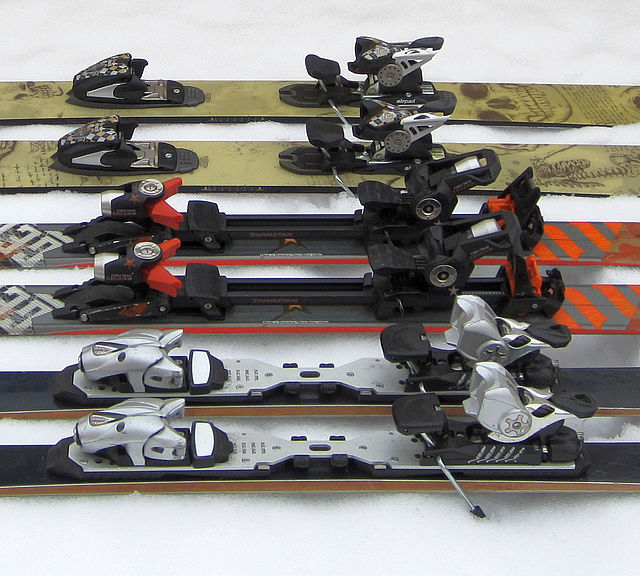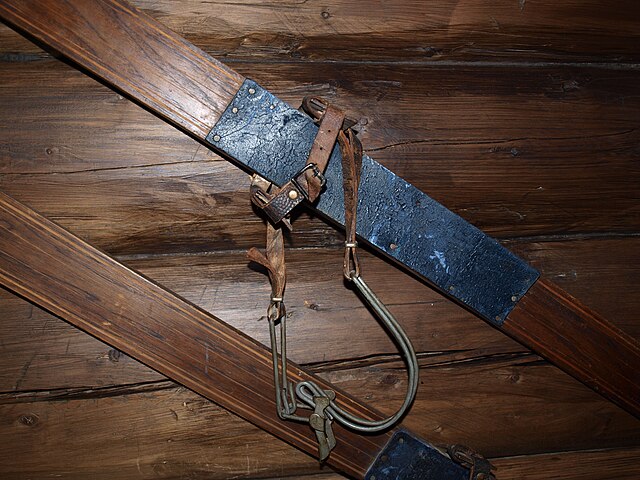Ski binding
Videos
Page
A ski binding is a device that connects a ski boot to the ski. Before the 1933 invention of ski lifts, skiers went uphill and down and cross-country on the same gear. As ski lifts became more prevalent, skis—and their bindings—became increasingly specialized, differentiated between alpine (downhill) and Nordic styles of skiing. Until the point of divergence in the mid-20th century, bindings held the toe of a flexible, leather boot against the ski and allowed the heel to rise off the ski, typically with a form of strap or cable around the heel.

Alpine step-in ski bindings

A late model Huitfeldt-style binding. The toe clip runs through the core of the ski to bend up on either side. This model uses a metal heel strap with a lever buckle instead of an all-leather design.

Cable binding

Alpine ski bindings, featuring integrated ski brakes and step-in-step-out heels (ca. 1980s, behind, 2010s, in front).
Ski boot
Videos
Page
Ski boots are footwear used in skiing to provide a way to attach the skier to skis using ski bindings. The ski/boot/binding combination is used to effectively transmit control inputs from the skier's legs to the snow.

A typical "universal" ski boot of the leather era. This example, by G. H. Bass, includes an indentation around the heel where the cable binding would fit, and a metal plate at the toe for a Saf-Ski release binding. The leather strap is a "long thong", used by downhill skiers to offer some level of lateral control.

A pair of modern front-entry alpine ski boots made by Salomon. As with almost all modern examples, four buckles are used to close the openings at the top of the foot and front of the leg to produce stiff cylindrical forms. Above the top buckle on the leg is the "power strap", which acts as a fifth buckle. The rivets forming the pivot points that allow the upper and lower portions of the boot to move independently are seen in silver.

Salomon's SX 92 Equipe was the penultimate development of their SX series of rear-entry ski boots. The boot on the left is in the "open" position.

Rosemount's side-entry design, circa 1968. The metal framework that provides forward flex is not visible in these images. The "crushed" section at the top of the boot is an elastic material that prevents snow from entering the cuff.